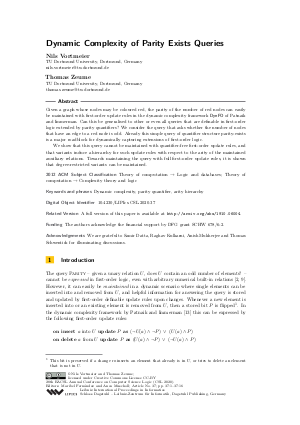LIPIcs.CSL.2020.37.pdf
- Filesize: 0.57 MB
- 16 pages

 Creative Commons Attribution 3.0 Unported license
Creative Commons Attribution 3.0 Unported license



Feedback for Dagstuhl Publishing